Features of wood-like countertops for the kitchen
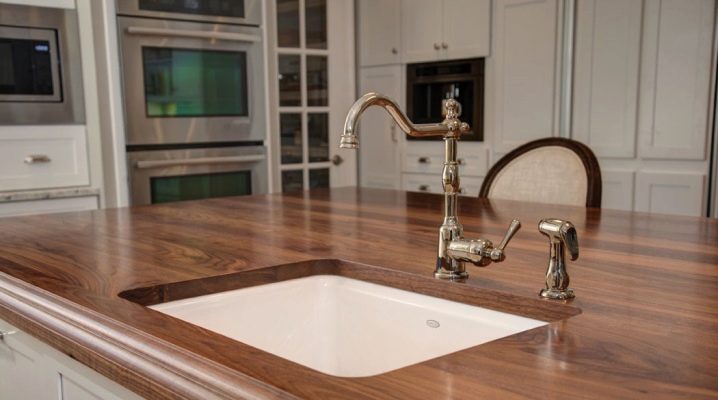
Choosing a kitchen worktop is always a tricky business, involving not only the choice of model and material, but also color, size and quality. This is one of the most working areas in the kitchen, so it has a lot of mechanical and thermal influences. Stone countertops (artificial or natural) are very durable, open up a number of possibilities for use: they are not afraid of moisture, temperature effects, easier to maintain and practically do not scratch, but in the price segment they are expensive. Concrete countertops look quite specific in the interior of an ordinary apartment, where they are often cooked, and are easily deformed under temperature influences.
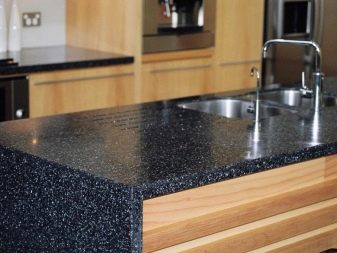
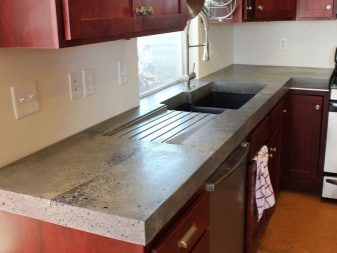
Wooden countertops are very beautiful, they attract with their naturalness, but they are expensive., if you select high-quality, stable wood, varnish and other liquids that prevent the occurrence of various defects during use. Wood-imitated countertops are considered more familiar and easier to choose for the kitchen. They differ in relative strength, budget, depending on the material, they do not respond to high levels of moisture in the air. In addition, wood gives the kitchen a coziness, naturalness and fits many styles: country, loft, Provence.

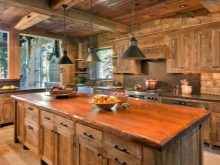
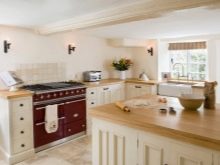
Laminated chipboard or MDF worktops
Chipboard - chipboard - is a pressed shavings of deciduous and coniferous wood, mixed with resin of synthetic origin. MDF - medium-density fiberboard is a fiberboard, pressed dry from fine chips at high temperature and pressure. In theory, it seems that these materials are the same, but visually they can be distinguished. In MDF, there is a smoother and more even surface, the cut is denser, unlike chipboard, where chips are found.
Note: MPF is easier to work with, it is easier to shapely cut and it leaves a minimum amount of chips.
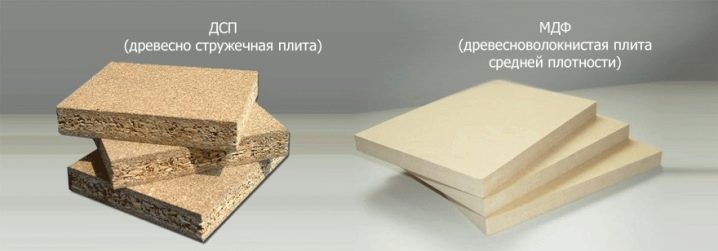
On any base - chipboard or MDF - a polymer layer (film) with a wood texture on the outside is glued on top. It provides minimal moisture penetration inside, protects the countertop from mechanical damage and plays a decorative role, which becomes the main reason for choosing.
A significant drawback of laminated flooring is that such imitation wood looks cheap and it immediately catches the eye.
One way or another, this category of goods is still being paid attention to due to its low cost.
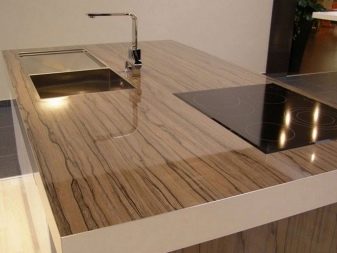
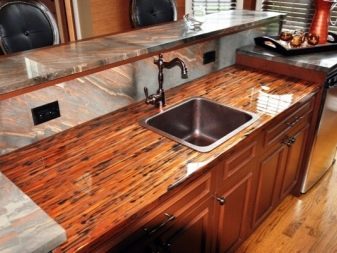
Veneered countertops
At the heart of such a table top is a shield made of MDF or inexpensive wood. The top is pasted over with decorative veneer made of natural wood, which makes the overall look more natural, but increases the risk of deformation of the veneer during use. The cost differs from the laminated table top in a larger direction. Poor-quality veneer can peel off from the base, so take a closer look at the quality of the material and the craftsmen. Pay attention to certified materials. Remember that over time, the coating can lose its original appearance, so varnishing the veneer is the best protection against external influences.
Without varnish, the veneer requires regular restoration and maintenance if you want to maintain a decent look on the countertop.
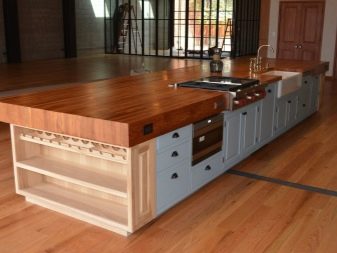
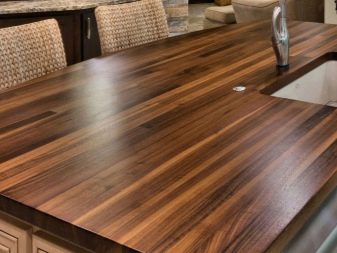
The main advantage of veneer is the natural top layer. It gives a natural and noble look to the worktop.
It is easier to restore it in a domestic environment, for example, by grinding. This move will not work with a polymer film - you just need to replace it.

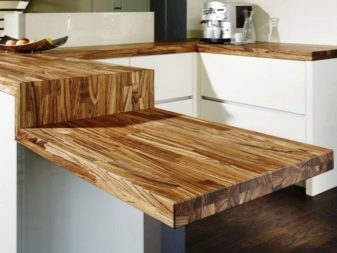
Advantages and disadvantages
An unambiguous advantage of wood-like countertops is their price - it is 2 times cheaper than natural material. And also they are more stable under thermal and mechanical stress than natural wood. Thanks to the variety of colors and shades, you can easily choose a countertop coating for the style of the kitchen that you like.
It should also be remembered that these types of countertops are environmentally friendly and easy to install.
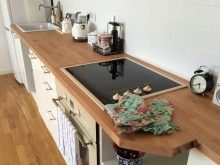
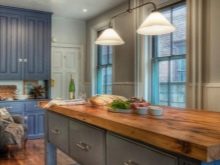
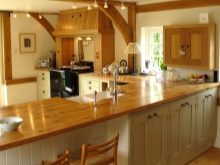
The disadvantages include:
- it is not as strong as stone or wooden countertops, so their service life is much lower;
- do not tolerate contact with hot dishes;
- the base itself (not covered with laminate) is afraid of moisture;
- a laminated wood-like countertop is more difficult to restore - it is easier to change the coating than to restore the film layer, and the key coating is invulnerable during operation, if only it is varnished;
- looks less natural than wood.

Features of countertops
The dimensions of the countertop are always selected individually, because it all depends on the furniture on which it will be attached, the dimensions of the kitchen and personal wishes. If the furniture was made according to your measurements for greater ergonomics and functionality of the kitchen, the dimensions of the remaining elements should be taken into account when installing the countertop. Basically, the thickness of the table top is 18, 28, 38 and 50 mm.
Tabletops 28, 38 and 50 mm are installed for kitchen cabinets, and for the "aprons" of the working area are used with a thickness of 18 mm. The optimal width is about 600 mm, the length is from 3 to 4.1 m.
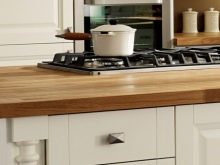
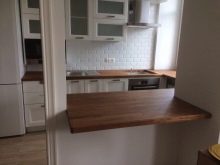
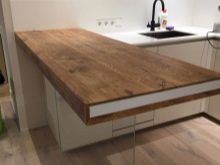
In order to avoid puffing up the surface, the installation instructions should be followed by using aluminum end and joining strips and a sealant to seal all seams.
Thus, moisture does not get inside the worktop and it will not swell after a month of active cooking in the kitchen.
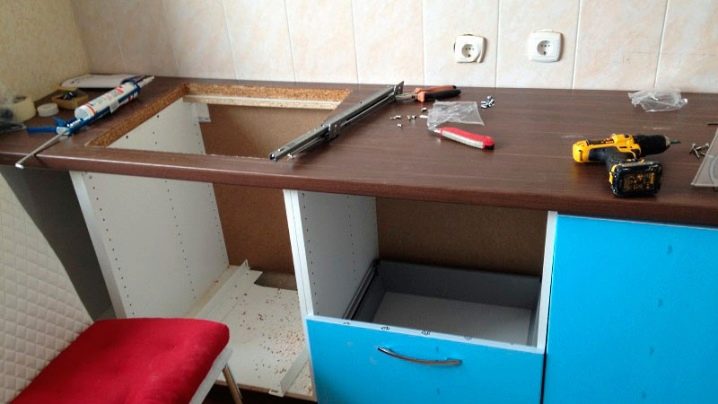
Selection of material
Fortunately, due to the low price of wood-look countertops, there is a large assortment. You can choose the most different designs of laminated chipboard under a tree or MDF with a key covering. The most successful option for the kitchen is oak, but deciduous tree species, for example, walnut, birch, alder, are also suitable. You should not choose pine - soft fibers have a detrimental effect on the wear resistance of the surface, therefore it is the cheapest in comparison with other species.
Pay attention to the color harmony of furniture and countertops.
If white or light beige shades prevail in the kitchen, light beige or light brown countertops will always be appropriate.
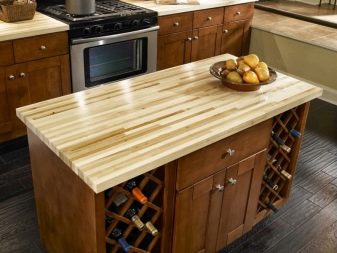
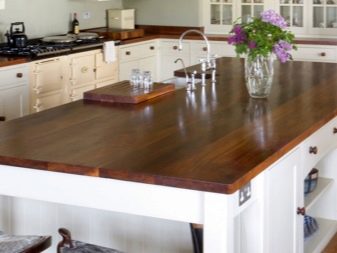
Care rules
Do not spill water on the surface, leave wet wipes or towels, as well as hot dishes - this will shorten the service life. Use a kitchen board to cut food. After wet cleaning the surface, be sure to wipe it again, but this time with a dry cloth.
Knowing all the subtleties when choosing and installing a kitchen countertop, it will be easier for you to choose the right material.
Focus on your feelings and preferences in color - it should not annoy you, because this is your work area during cooking and other manipulations.
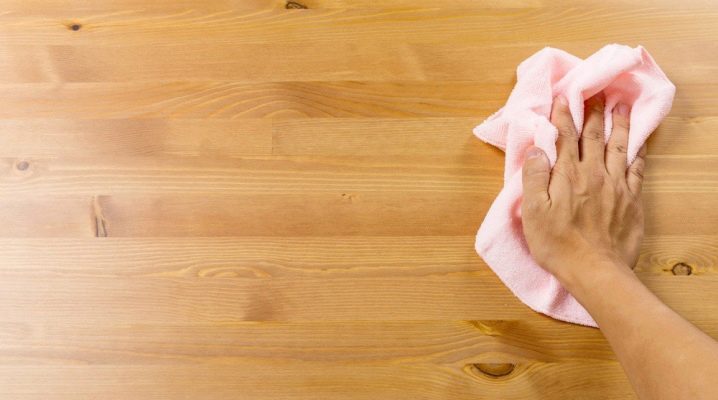
For more information on chipboard kitchen countertops, see the video below.













The comment was sent successfully.